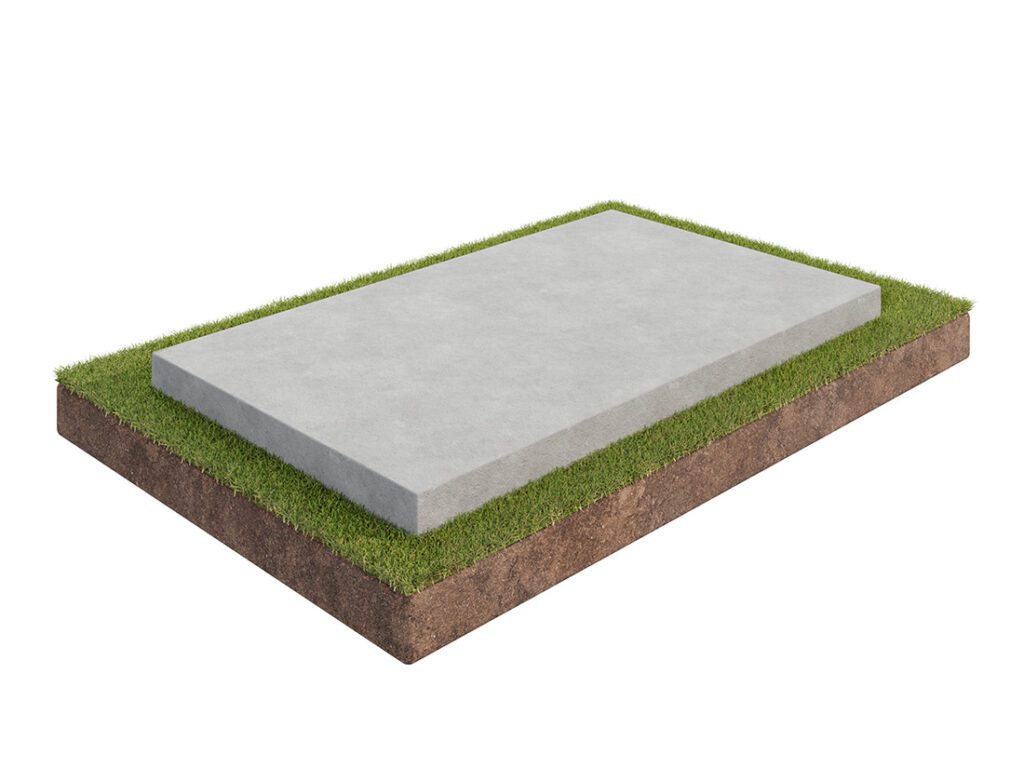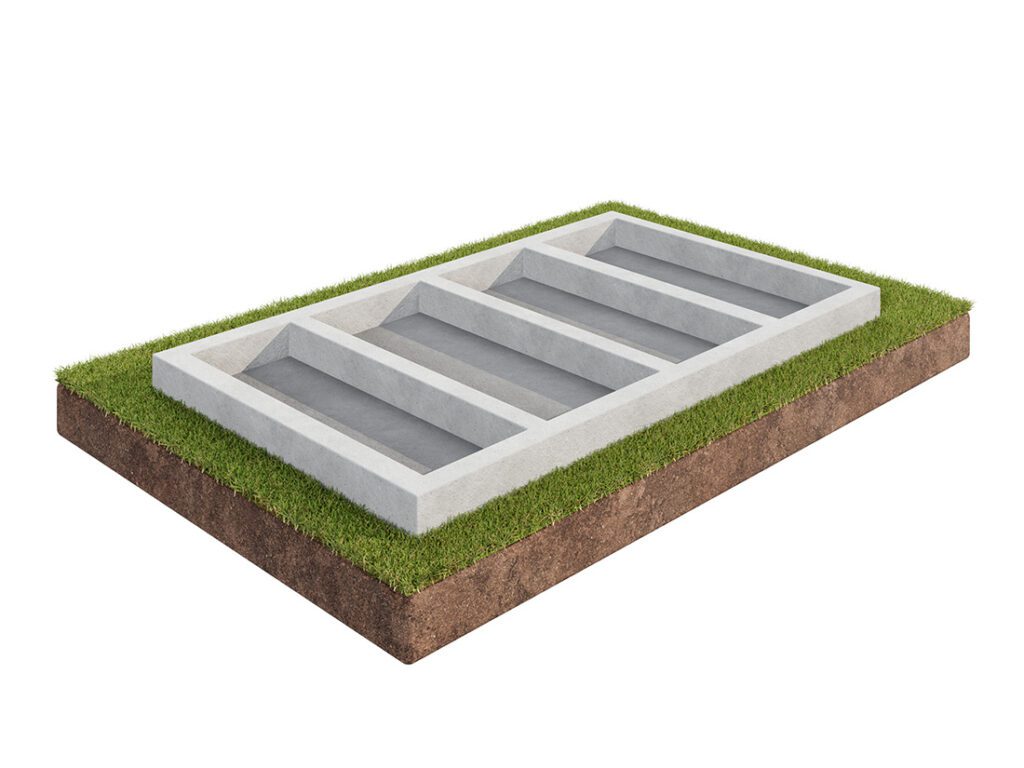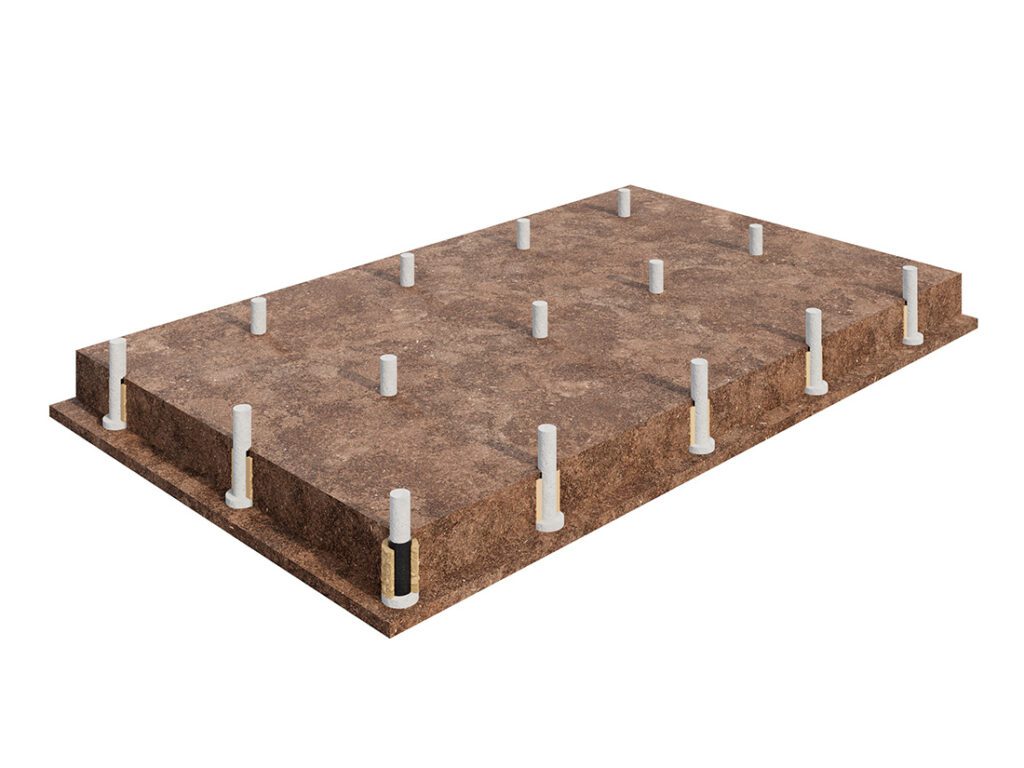Different foundation options for a wooden house
There are various options for the foundation of a timber cabin. When choosing the type of foundation, it is important to consider the terrain of the plot, the soil and the design of the cabin itself. In this text, we would like to introduce you to 3 different types of foundations that we recommend for the timber cabins we manufacture. The foundations of a wooden house can be flat, strip or pile. Each type of foundation has its own pros and cons, so make sure you consider your options carefully.

Plate foundation
It is a solid slab of reinforced concrete placed underneath the whole structure. It distributes the loads evenly over the entire area of the structure. It is often used in light to medium weight structures or in unstable ground conditions, e.g. where soil is sandy. It is one of the newer types of foundation, which was introduced for buildings in Lithuania not so long ago.
Advantages of this type of foundation:
Easier and faster installation compared to other more complex foundation types.
Energy efficient choice as it covers a continuous area, avoiding “cold bridges”.
Disadvantages of this type of foundation:
High cost of concrete and reinforcement.
Relatively high cost of foundations, both in terms of the amount of materials and the capacity of work required.
Requires careful preparatory work, such as soil compaction.
Strip foundation
This is another popular choice for foundations, and for a long time it was probably the most popular choice for houses built in Lithuania. These are continuous strips of reinforced concrete or concrete that run underneath all the load-bearing walls of the house. These foundations are used for lighter dwellings.
Advantages:
- More cost-effective than flat foundations (material and labour costs are lower).
- Good for buildings with a basement.
Disadvantages:
Suitable only for solid and uniform soils, not suitable for very weak soils.
Requires a more complex formwork and excavation process.
Foundations are not resistant to ground movements or uneven soil.


Pile foundation
Pile foundations, as the name implies, are not solid – they consist of individual piles that are drilled or hammered into the ground and installed at equal distances under all the walls of the house. This allows the weight to be distributed evenly, and pile foundations can withstand higher loads and are suitable for a wide range of structures, regardless of the properties of the soil.
Advantages:
- Can be used where soils are weak or uneven.
- Suitable for structures of high height and weight.
- Allows a reduction in material costs compared to massive flat foundations.
Disadvantages:
Longer installation time due to drilling or hammering process.
No basement is allowed.
Requires more knowledge and heavy machinery to install piles.
Types of wooden house foundations - the choice is yours
When choosing the best type of foundation, it is necessary to evaluate not only its technical parameters, but also the available budget, the soil of the construction site and many other factors. We hope that after reading this text it became a little clearer what the main types of foundations we recommend are and which one may be best suited for your case. We normally recommend choosing pile foundations for the houses we manufacture, as they are best suited to the floor structures of our projects and can be installed on any soil.